The Science Behind Nature | NEW Ryder Turf Pigment launched

New Ryder turf pigment technology from Syngenta offers the chance to instantly enhance the colour and visual appearance of turf, along with exciting properties to protect leaves from the harmful UV ray damage.
Not all energy emitted by the sun is useful for turf grass growth. In fact, some of this energy can be harmful to the plant – effectively causing damaging sunburn to plant cells. Ryder enables plants to manage light more effectively, and to make light work more efficiently for turf.
Launching the new Ryder pigment, Shane Lee, Syngenta Commercial Head of Marketing - Turf, Landscape and Ornamental, APAC, highlighted trials and golf course superintendents’ experiences had demonstrated the instant visual effect to produce a lasting deep, desirable green colour, along with lasting effects to counter damaging light waves.
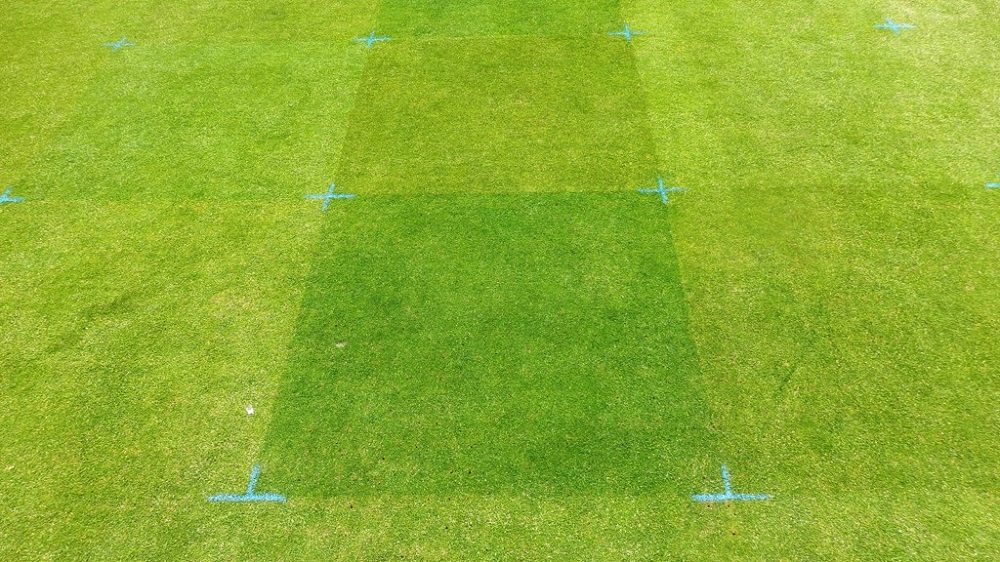
“Ryder is a highly concentrated and stable green pigment designed for use on managed turf to improve its appearance and to help protect against UV radiation and high light intensities” he said.
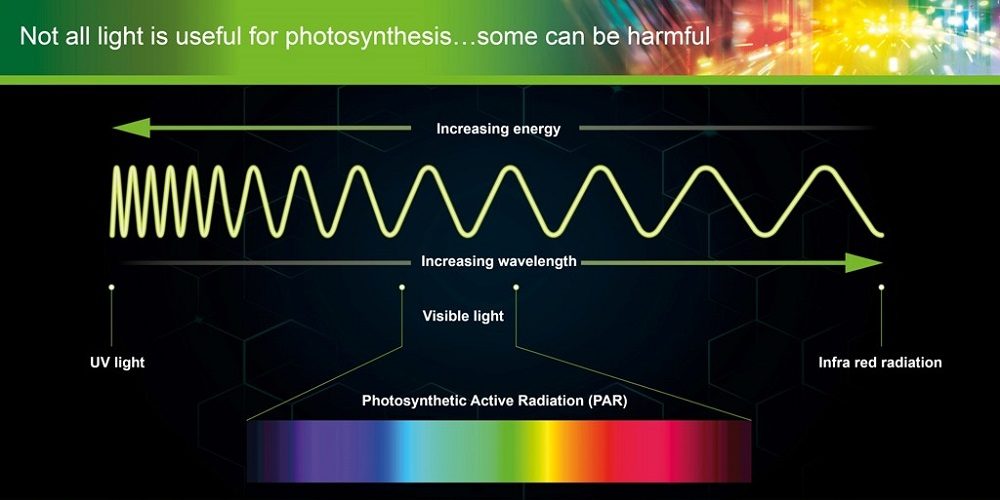
“Photosynthetic Active Radiation (PAR), includes all the ‘colours’ of the light spectrum, of which turf plants use blue and red light most efficiently to support growth and development.
“Ultraviolet light damages DNA, chlorophyll molecules, lipids, membranes photosynthetic proteins and pigments that resulted in less photosynthetic efficiency”
When free radicals including reactive oxygen species like hydrogen peroxide, superoxide, etc, are developed in plant, they start stealing electrons from the plant leading to plant stress. Ryder protects plant from ultraviolet lights damage by absorbing and transmitting and reflecting these lights away from the plants.
“Ryder mimics the plant’s natural pigment defences, when it produces carotenoids, anthocyanins, flavonoids, and cuticle waxes,” he said. “However, with Ryder, you get to control the green colour, compared to leaf purpling of anthocyanins, for example.”
The intensity of colour produced by Ryder can be selected through adjustments to application rate, frequency and integrated fertiliser programmes, he advocated.
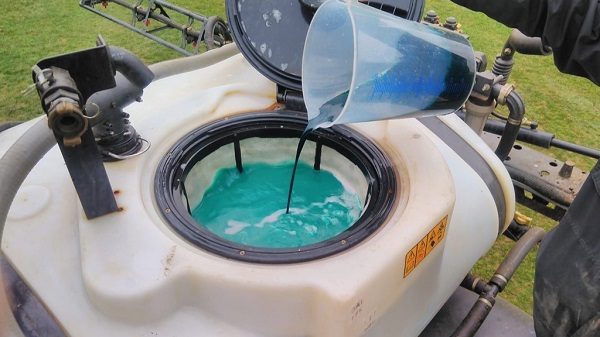
“Unlike existing water-soluble turf dyes, Ryder is a concentrated 70% pigment, formulated such that, once dry on the leaf, is not washed off by rain or irrigation and is stable in light. It stays in place on the leaf surface, which retains its colour and effects for longer.”
Shane advised that the instant colour it provides can act as a spray pattern indicator itself, especially at higher rates or on turf inherently paler at the time of application. For even coverage, he recommended always applying using Syngenta XC Nozzles. STRI trials had shown a water volume of 250 – 500 litres/ha provided effective leaf surface coverage.
“In countries like Hong Kong, Taiwan, and Northern Vietnam that experience mild winter, the enhanced colour with Ryder can increase canopy temperature and quickly gets turf looking great and ready for play” advised Shane.
“Application following renovations’ sand topdressing or over seeding has been shown to instantly recover appearance.”
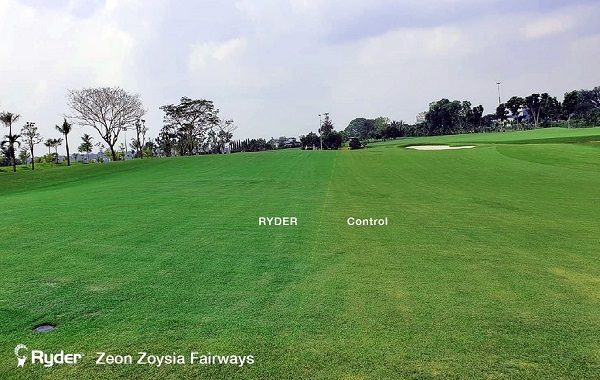
Ryder application rates at cutting heights below 12 mm - eg. greens, tees and cricket fields - have typically been at 0.75 to 1.5 l/ha, increasing to 1.0 to 2.0 l/ha on longer fairway turf or sports fields, for example (above fairway with Ryder treatment - left - and, below, treated green - right - providing consistent attractive colour).
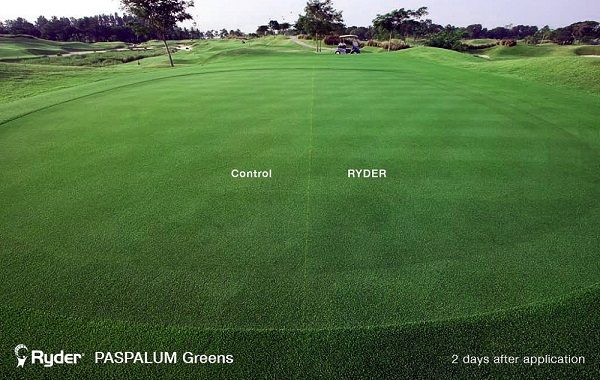
Users have experimented with application rate and frequency to find a colour intensity most attractive to their own situation.
When used in conjunction with a Primo Maxx programme, the reduced clippings removal from mowing would increase the longevity of Ryder results during growing periods, added Shane.
Ryder will be available for sales July 2020. For more information on where and how to buy Ryder, please contact Syngenta.
